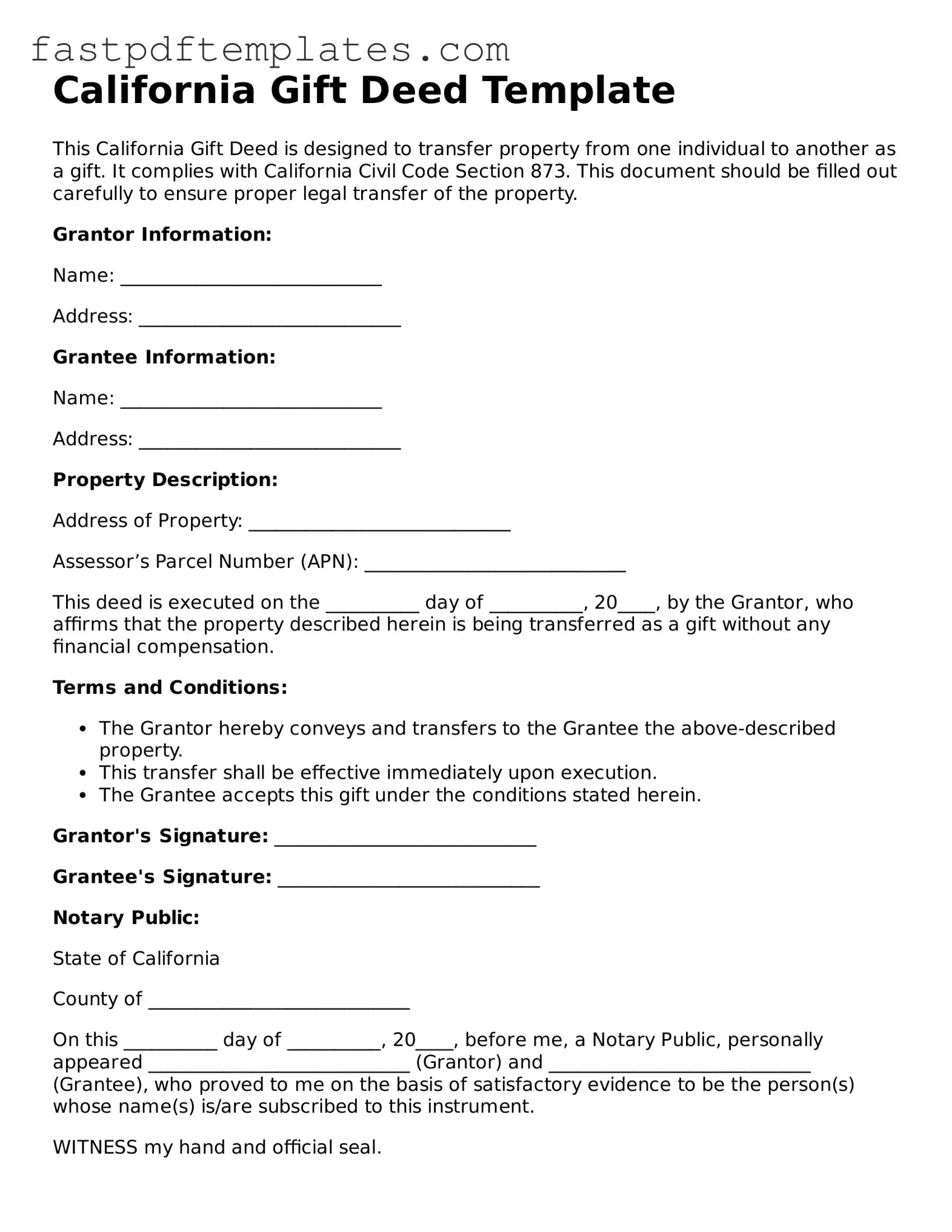California Gift Deed Template
This California Gift Deed is designed to transfer property from one individual to another as a gift. It complies with California Civil Code Section 873. This document should be filled out carefully to ensure proper legal transfer of the property.
Grantor Information:
Name: ____________________________
Address: ____________________________
Grantee Information:
Name: ____________________________
Address: ____________________________
Property Description:
Address of Property: ____________________________
Assessor’s Parcel Number (APN): ____________________________
This deed is executed on the __________ day of __________, 20____, by the Grantor, who affirms that the property described herein is being transferred as a gift without any financial compensation.
Terms and Conditions:
- The Grantor hereby conveys and transfers to the Grantee the above-described property.
- This transfer shall be effective immediately upon execution.
- The Grantee accepts this gift under the conditions stated herein.
Grantor's Signature: ____________________________
Grantee's Signature: ____________________________
Notary Public:
State of California
County of ____________________________
On this __________ day of __________, 20____, before me, a Notary Public, personally appeared ____________________________ (Grantor) and ____________________________ (Grantee), who proved to me on the basis of satisfactory evidence to be the person(s) whose name(s) is/are subscribed to this instrument.
WITNESS my hand and official seal.
Notary Signature: ____________________________
Notary Seal:
This Gift Deed may require further specific local requirements. It is advisable to consult with a legal professional to ensure compliance with local laws.
